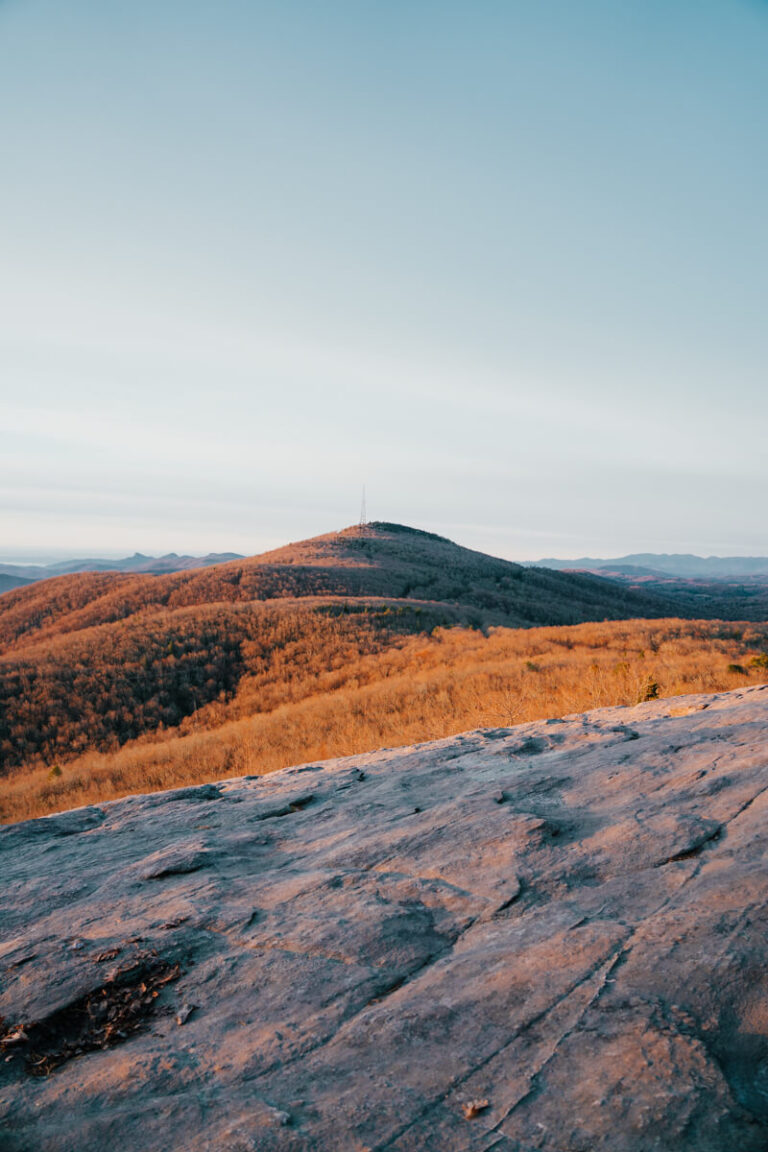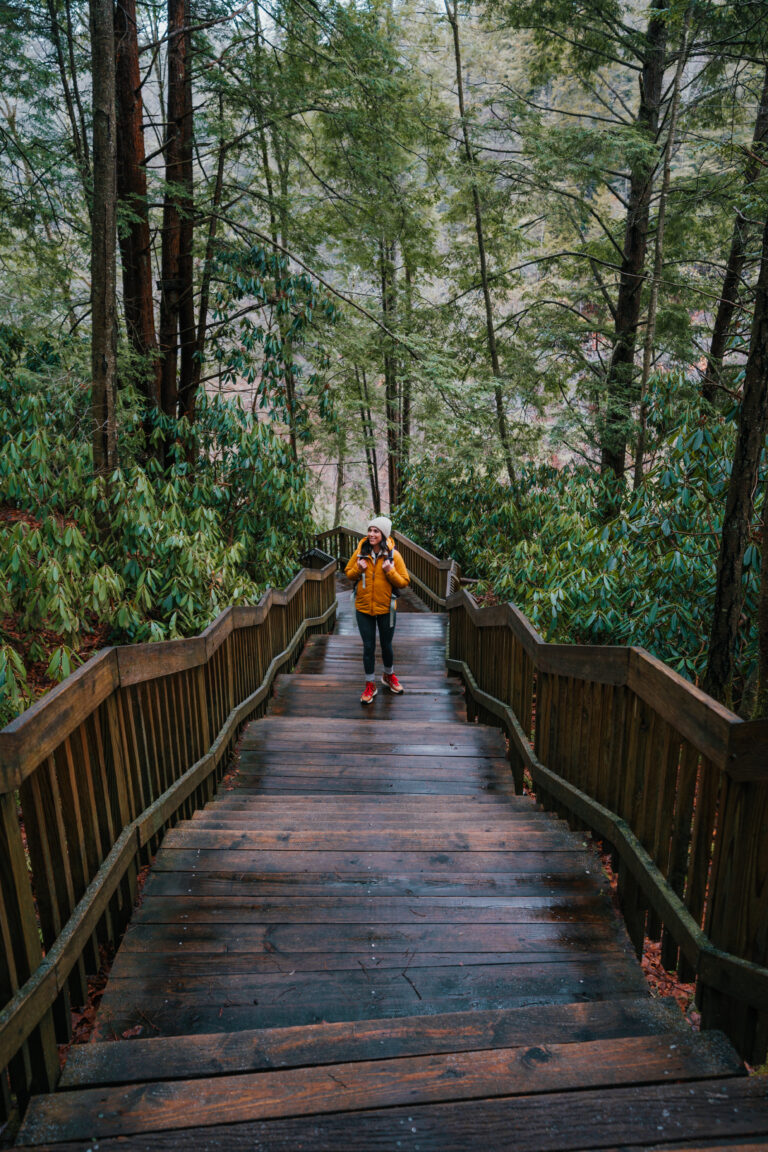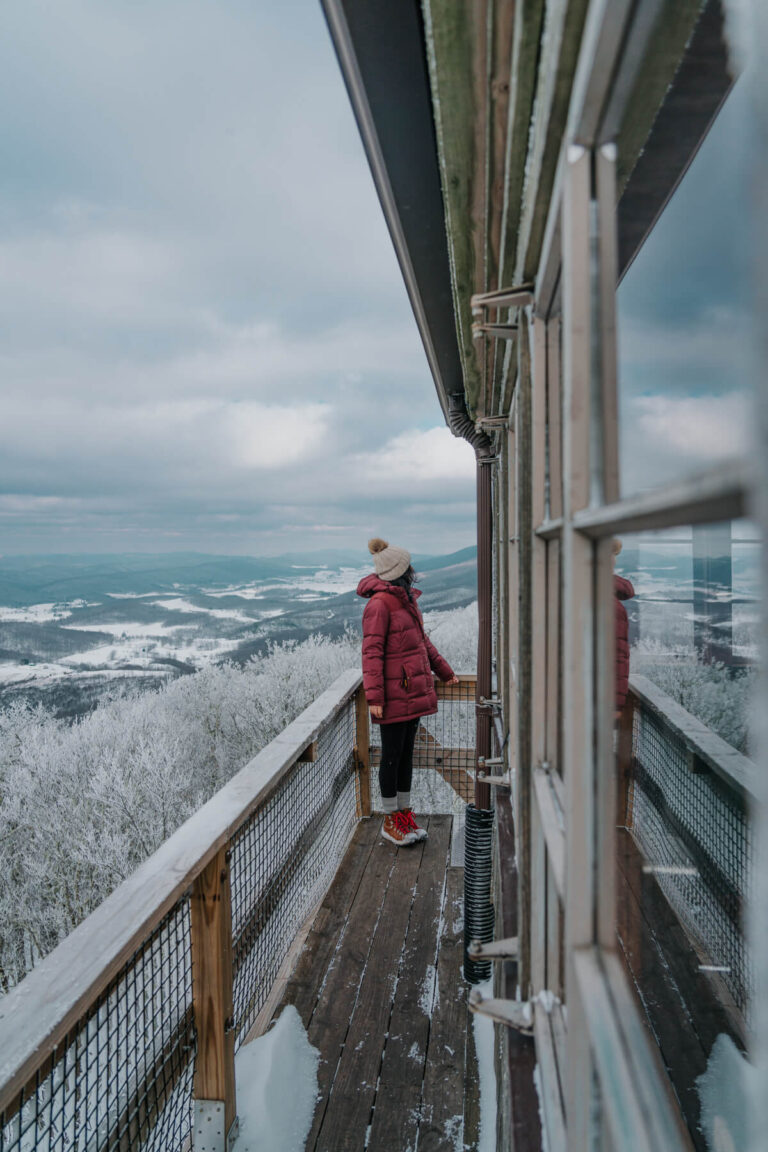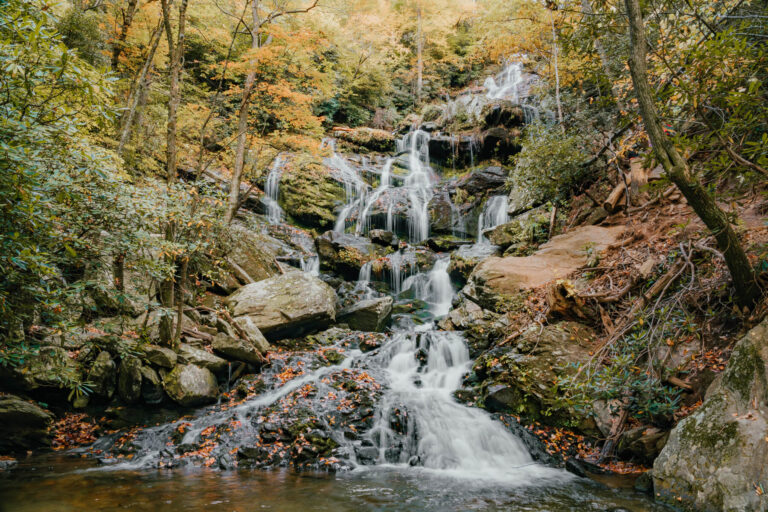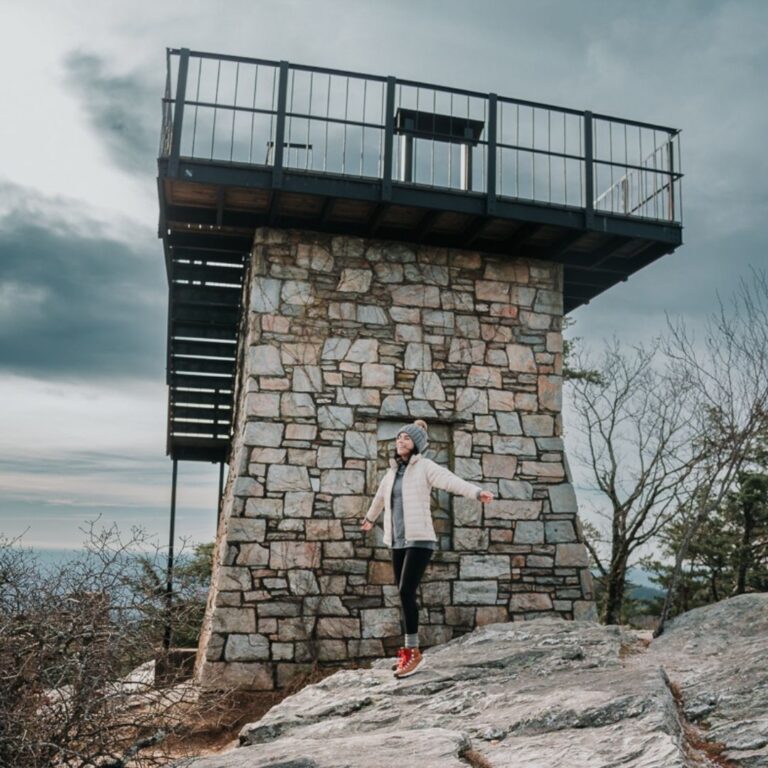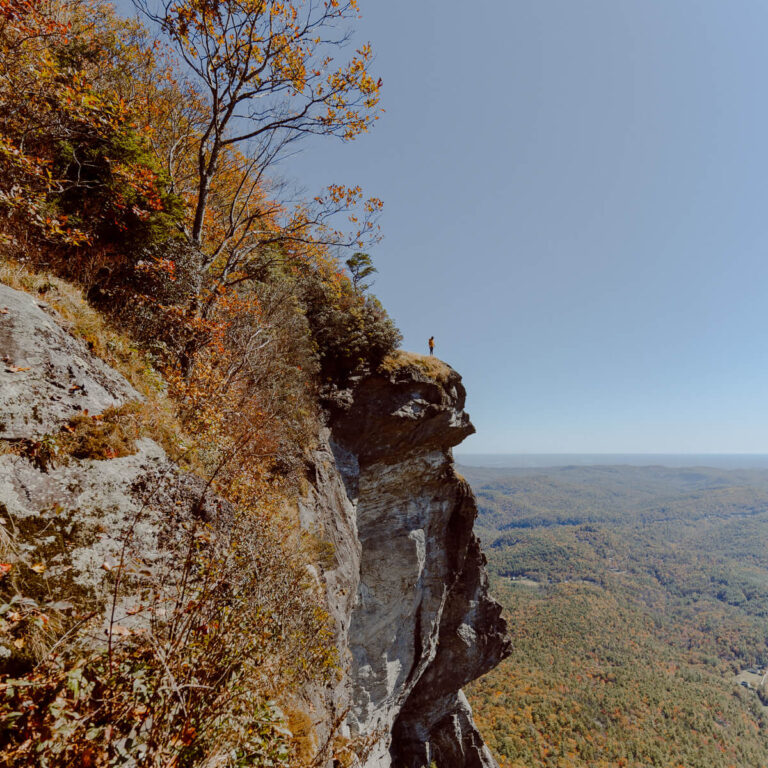Hiking for Beginners on a Budget: The Complete Guide
If you’re thinking about trying hiking for the first time (or maybe you’ve been a few times but still consider yourself a newbie), then you probably want to make sure you have everything you need but don’t want to spend too much money on new gear. Hiking gear can get pretty pricey, but there are tons of affordable options out there! Even as an experienced hiker, I love finding great deals. Finding gear that’s both reliable and affordable is a win-win.
In this blog post, I’m sharing my best tips when it comes to hiking for beginners on a budget. Whether you’re in the market for your first pair of hiking boots or want to know what you need to pack for your adventures, I’m here to help!
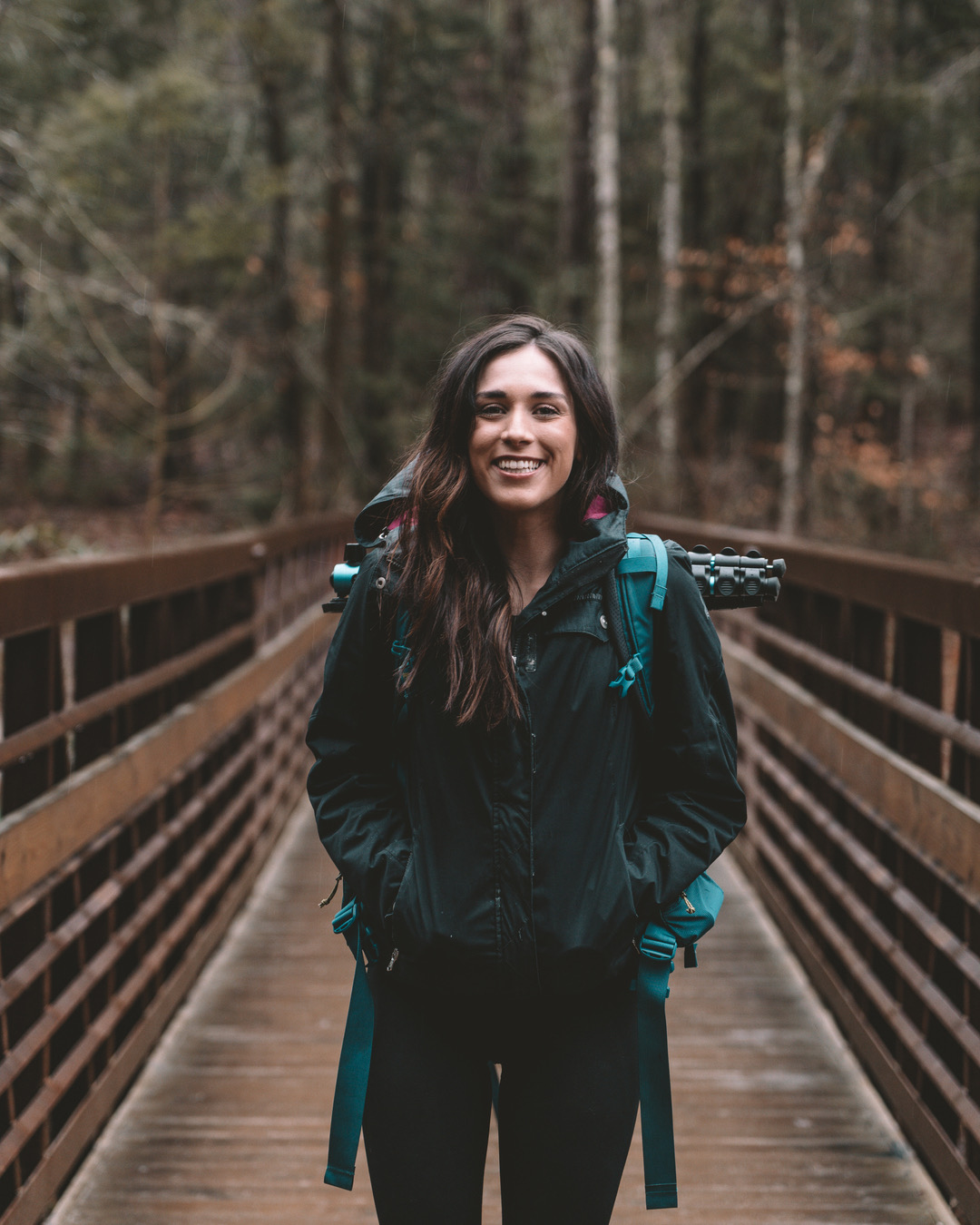
Disclaimer: This page may contain affiliate links where I earn a small commission at no extra cost to you.
Budget-Friendly Hiking Tips for Beginners
The good news is that hiking does NOT have to be an expensive hobby! What is hiking, anyways? It’s essentially just walking in nature (generally on designated trails or paths) for fun. I started hiking in high school and quickly became addicted. Now I couldn’t imagine my life without hiking. It’s my favorite pastime, which you probably already know if you’ve been following me for a while!
How to Prepare for a Hike
Whether you plan to conquer some of the best hikes in the US or explore your backyard, you must prepare! Preparation is key and could even save your life one day. I don’t mean to scare you, but it’s true. My best tips for getting ready to hit the trails are to physically prepare and to research/make a plan!
Physically prepare
You do not need to be an athlete to go hiking. However, you want to ensure your body is in good physical condition. The average healthy person shouldn’t have any issues whatsoever with hiking. It’s always a good idea to start small and work up to more physically demanding hikes (just as you would at the gym with a workout routine).
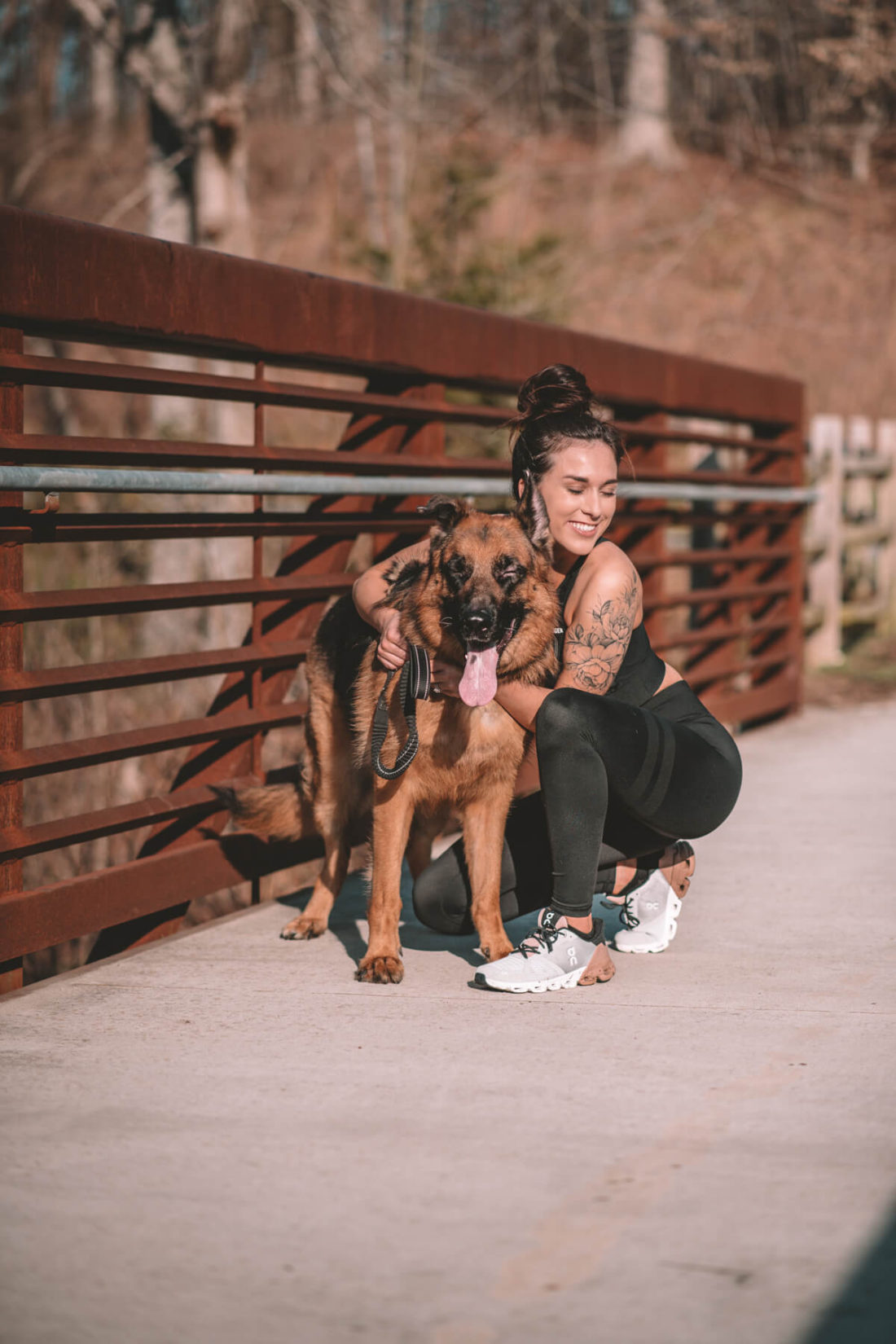
You’ll be able to build up to more challenging hikes (if that’s your goal) as you hike more. Experience will give you a better idea of your comfort level in terms of distance, elevation gain, terrain, etc.
There have been numerous times when I thought, “Oh, this hike will be a breeze,” and then it kicked my butt for some reason such as the weather that day. This goes to show why researching and making a plan are two critical aspects of preparing for a hike.
Research & make a plan
I would argue that researching and planning are the two most important things you can do before hiking. “Plan ahead and prepare” is one of the principles of Leave No Trace.
By researching ahead of time and making a plan, you’re far more likely to have an enjoyable experience (knowing where to go, having the right gear/clothing, etc.). And, you’ll feel more confident!
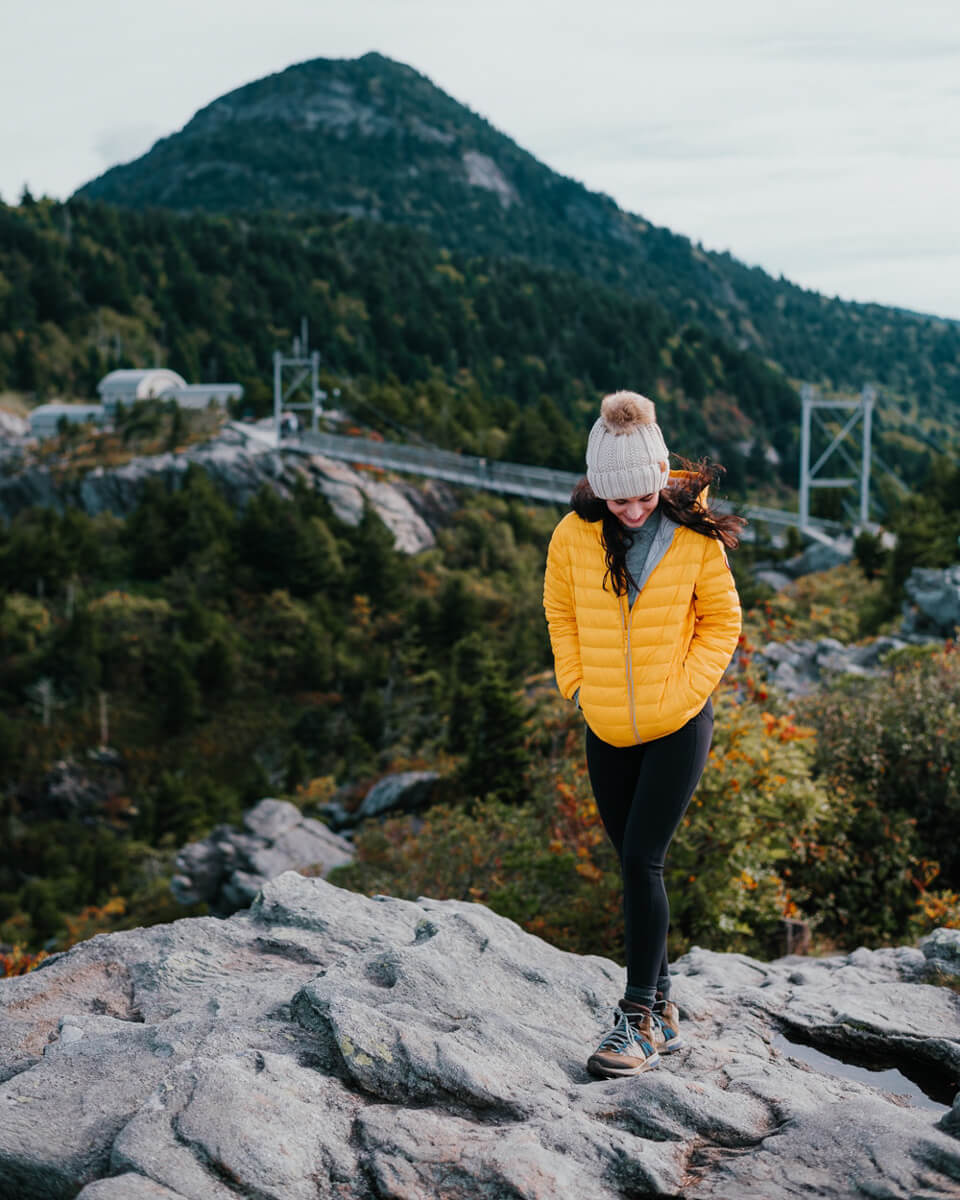
Outing myself here, but I can’t tell you how many times I’d get to the “trailhead” only to realize the GPS hadn’t taken me to the right place when I first started hiking. Then I was in a pickle because I had no cell service to try and figure things out. Here’s another one… I once got to the summit and had to turn back immediately because it was freezing (despite it being hot at the trailhead), and I didn’t pack a jacket. So frustrating but 100% my fault!
Nowadays I know that planning makes things go A LOT smoother. It’s worth the extra effort.
Pro tip: Anytime I’m planning a hike (or a day full of hikes), I like to do a little “Hike Itinerary” in the notes app on my phone. I add helpful info like the trail names, locations, distances, expected durations, and so forth. This is also super helpful for sharing your plans with someone else (just screenshot and share *before you get to the trailhead where you may or may not have service*). I highly recommend doing this whether you’re a beginner or a seasoned hiker.
Budget-Friendly Hiking Gear: What to Pack
The goal here is to pack everything you need without overpacking. Carrying a pack that’s too heavy becomes a major hindrance when hiking (yet another lesson I’ve learned the hard way). I recommend carrying the 10 Essentials in a 20-30L pack on all your hikes. Here’s an affordable 25L pack (under $30) that’s perfect for day hikes!
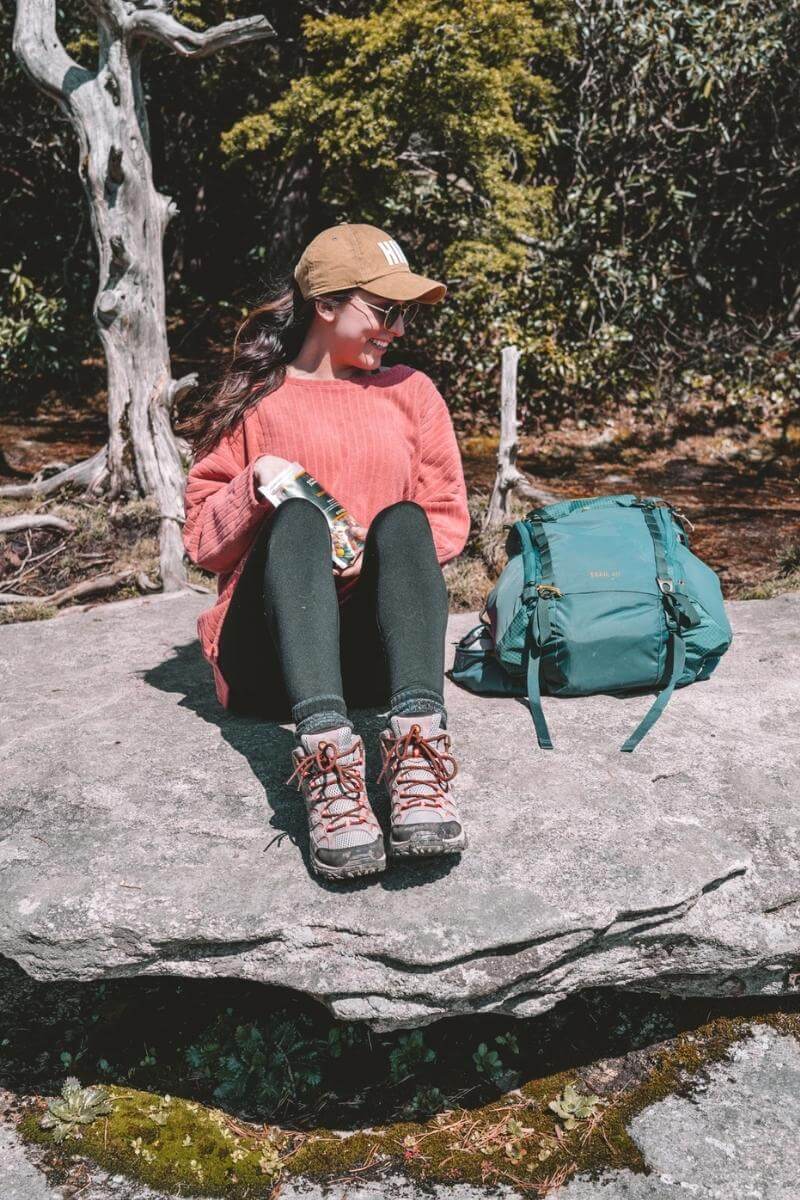
For the most part, the 10 Essentials are simple items you can snag off Amazon for less than $20 (which is perfect for hiking for beginners on a budget):
- Headlamp – You never know when you might need a headlamp. There have been instances where I thought I had plenty of light left on a hike but needed my headlamp due to the thick forest canopy blocking the light. I use this GearLight LED Head Lamp and always carry extra batteries!
- Sun protection – I always have sunscreen in my pack! Lately, I’ve been a big fan of sun hats.
- First aid – I keep this mini first aid kit in my pack at all times!
- Multi-Tool – A multi-tool is always good to have on hand!
- Fire – Another emergency item! Odds are you won’t use a lighter or matches on your average day hike, but they’re good to have.
- Navigation – We’re super reliant on technology these days, but phones die, get lost, and break. Learning how to read a topo map and how to use a compass (so that you can carry these items and actually know how to use them) could save your life someday!
- Shelter – You might be wondering why the heck you need “shelter” for a day hike. This is one of those items you hopefully won’t use but is good to have just in case. I carry this emergency shelter as a precaution.
- Extra food – Hiking will make you work up a serious appetite, so make sure to pack snacks! My favorites include no-cook items like turkey jerky, trail mix, granola bars, fruit, and PB&J sandwiches.
- Extra water – You’ll want to ensure that you pack enough water to prevent dehydration! I like to carry a Nalgene and/or hydration bladder depending on the hike conditions (weather, distance, etc.).
- Extra clothes – It’s SO important to pack layers since nature is unpredictable! I always have a lightweight down jacket, rain jacket, gloves, an extra pair of socks, and a beanie in my pack because you just never know.
Technically not part of the 10 Essentials, but I like to pack a portable charger for my phone as well!
Budget-Friendly Hiking Attire: What to Wear
Putting thought into what you wear on a hike might seem trivial, but it’s a big deal! As a general rule, moisture-wicking clothing will be your BFF whether adventuring in the warmer or cooler months.
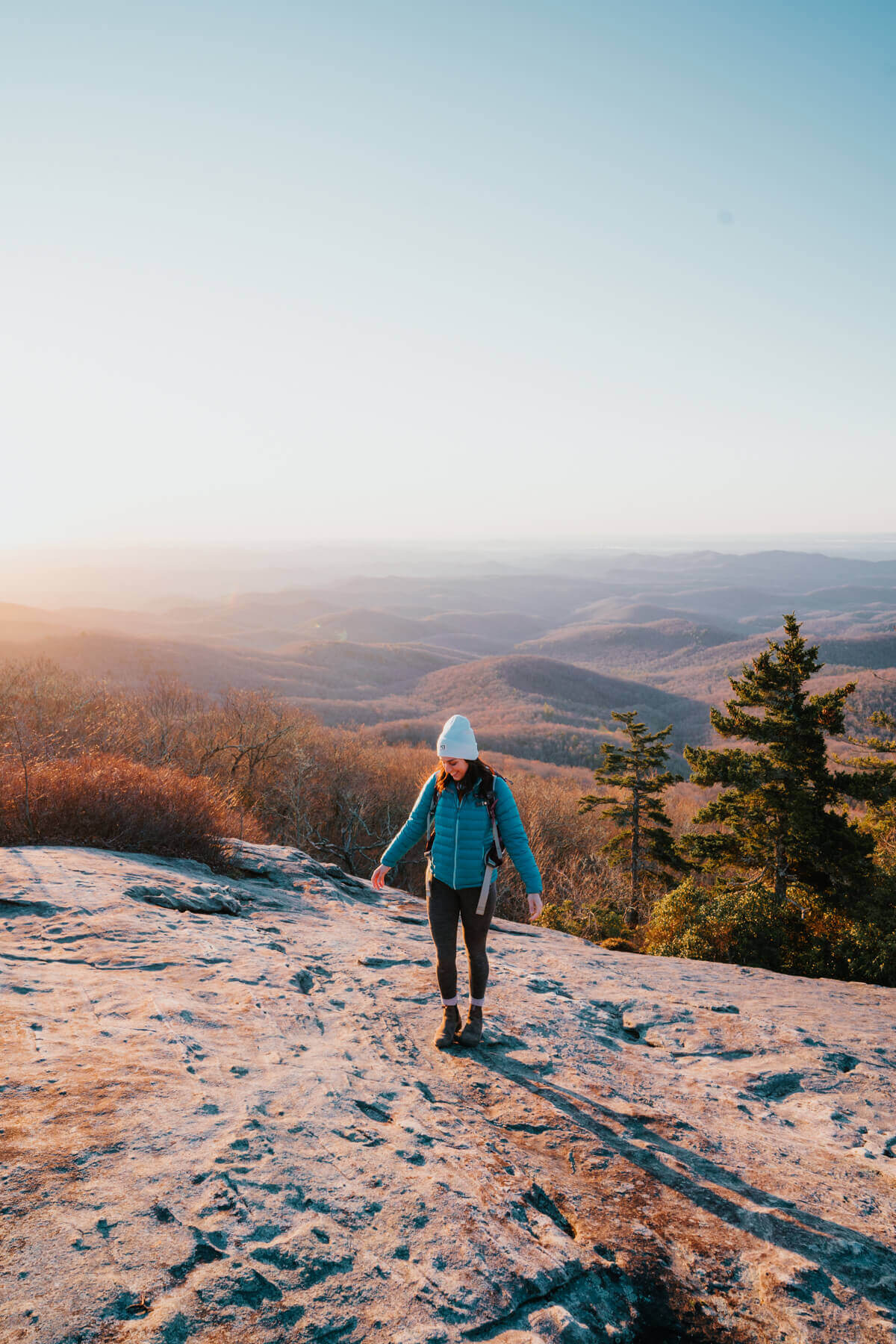
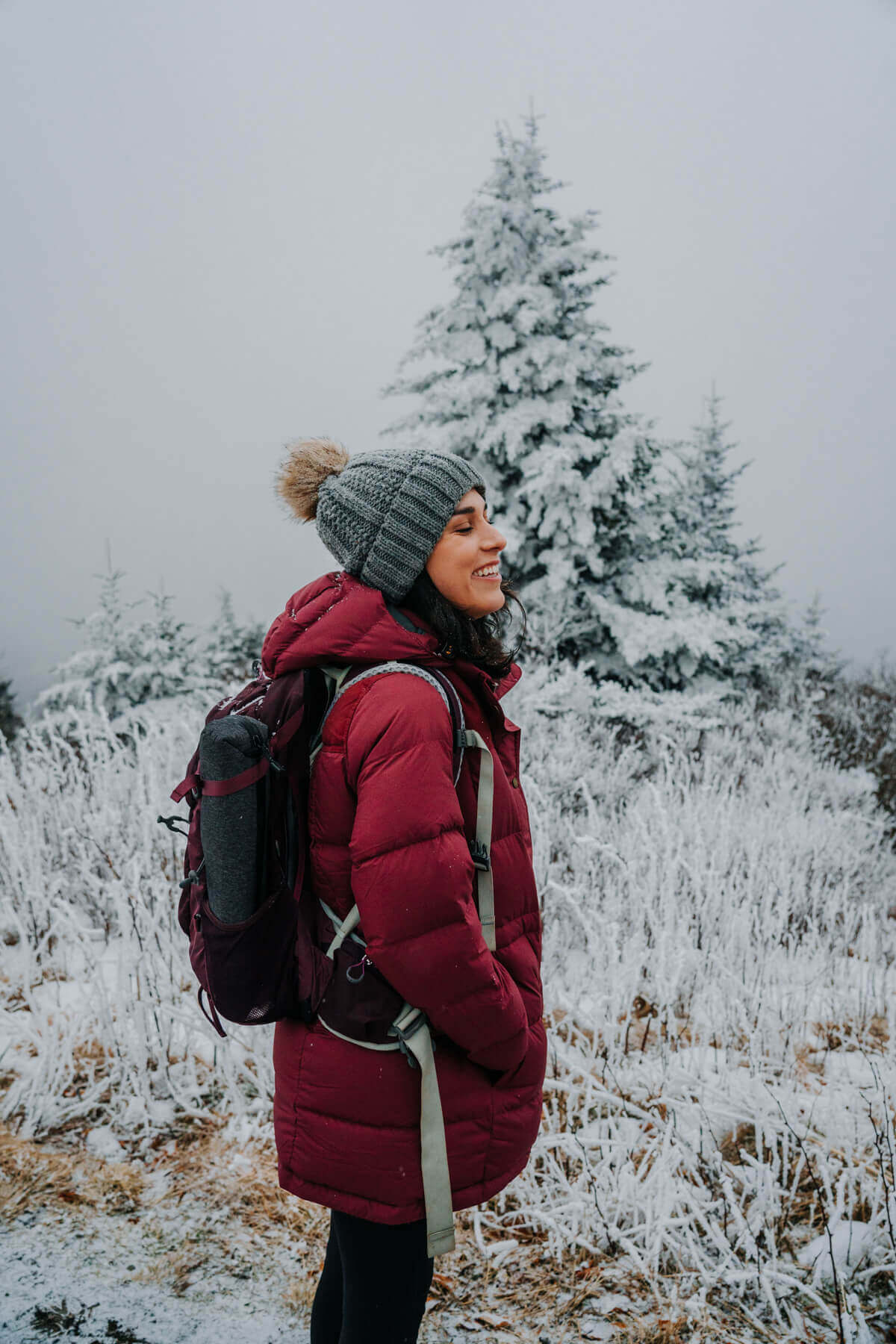
Warm-Weather Hiking Attire
I first want to stress the fact that just because it’s warm at the trailhead does NOT mean it will be warm at your endpoint, especially if you’re hiking a trail with a decent amount of elevation gain. ALWAYS PACK LAYERS! I like to keep a lightweight down jacket, rain jacket, gloves, an extra pair of socks, and a beanie in my pack.
These are my must-have items for hiking in the warmer months:
- Sun shirt
- Hiking pants or shorts *pants will do a better job of protecting you from the sun and bugs
- Merino wool socks *these are pricey but worth the $
- Hiking boots
- Sun hat
Cold-Weather Hiking Attire
I will say that winter hiking attire tends to be a lot more expensive than summer hiking attire, but you can use money-saving hacks (which I’ll cover in the next section) to combat that! In the summer, you don’t need to wear as many layers and can generally get by with clothing made out of cheaper material. Skimping on good cold-weather gear could put you at risk for hypothermia.
You could easily drop hundreds of dollars on a hiking coat for winter, but it’s not always necessary (though that doesn’t mean the alternatives will be “cheap”). Here are my top recommendations for budget-conscious winter hiking attire:
- Base layers *moisture-wicking base layers are a must
- Water-resistant down jacket
- Merino wool socks *these are pricey but worth the $
- Insulated hiking boots
- Fleece-lined beanie
- Neck gaiter
- Waterproof gloves
Money-Saving Hacks for Hikers
Hiking itself is free and there are so many things you can do to save money on gear. I’ve learned A LOT over the years (including when it makes sense to spend vs splurge) and want to share that with you!
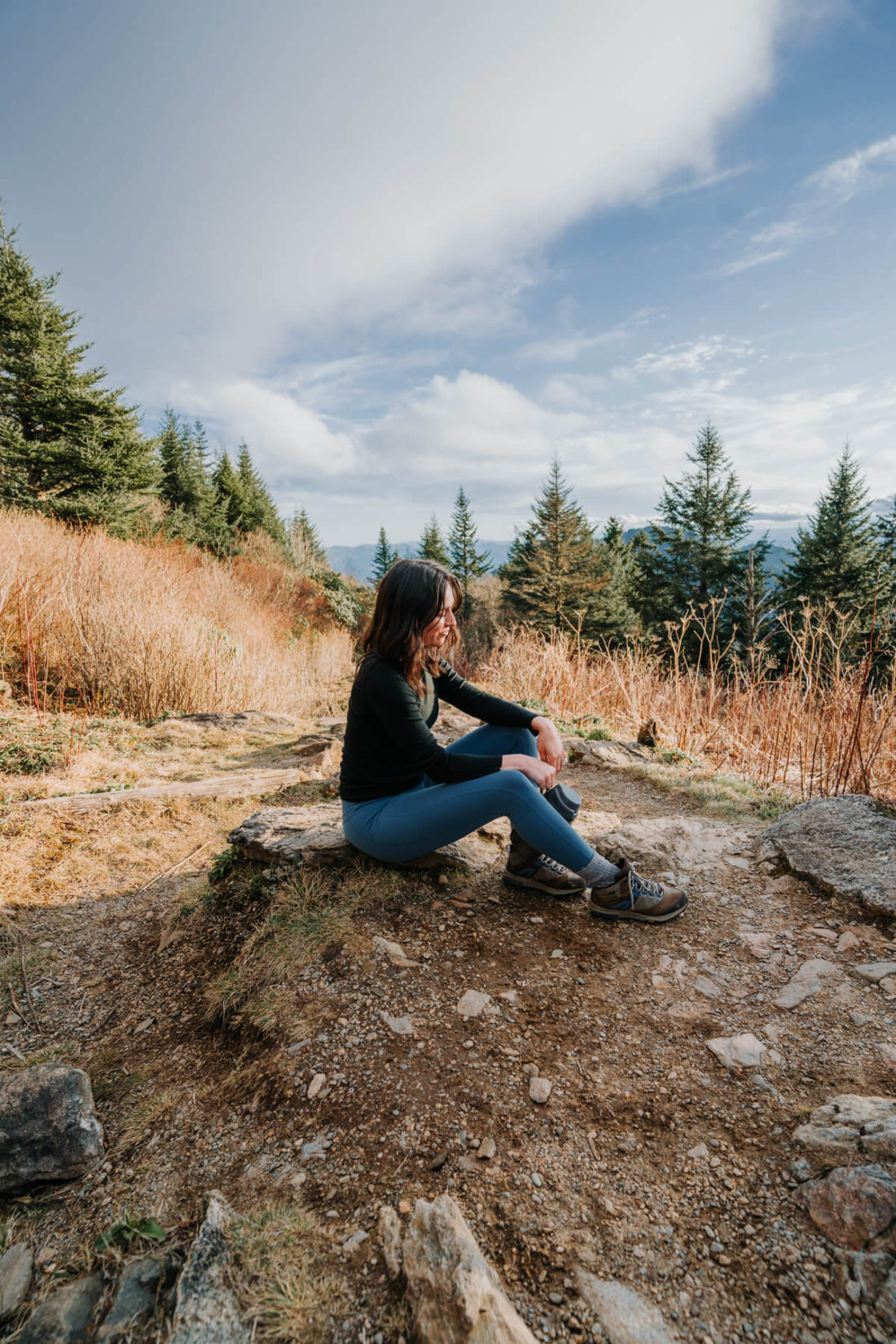
- Download the free GasBuddy app – Doing so will help you find the best deals on gas while you’re on the road! If you’re like me and live a few hours from your favorite trails, you’ll probably end up driving a lot.
- Invest in the America the Beautiful Pass – If you plan to hike in US national parks, this will save you money. This nifty little pass costs just $80 and covers entrance fees to all National Parks & Federal Recreational Lands for one year. Most national parks charge an entry fee of $30+ per vehicle, which means the national parks pass will save you money if you plan to visit 3 or more national parks in a year.
- Buy used gear and/or use what you have – REI Re/Supply and Patagonia Worn Wear are two of my favorite resources for purchasing used clothing/gear. Thrift stores and FB Marketplace are great too.
- Watch for sales – If there’s a pricey piece of gear you REALLY want, you might be able to snag it on sale if you’re patient! REI does an awesome annual sale for REI Co-Op Members.
- Protect your feet – This is the main category where I think it makes sense to splurge in terms of hiking for beginners on a budget. You’ll spend A LOT of time on your feet when hiking, so it’s important to treat them well! I recommend purchasing hiking shoes from REI because they have an excellent return policy (and their associates are SO helpful when it comes to answering questions). As for socks, always go for merino wool! Darn Tough & SmartWool socks are pricey but 100% worth the investment.
- Pack your lunch – This will help you avoid spending money while you’re out. I pack this small cooler (which fits in my passenger seat) with food, drinks, and snacks on days I know I’ll be on the go.
- Buy a reusable water bottle – A water bottle is more cost-effective in the long run and reduces waste from single-use plastic!
- Try camping – If you don’t live near many trails, you might have to plan a special trip to go hiking. Airbnbs can get expensive FAST. To save a big chunk of change, I recommend camping! You’ll be looking at spending $30ish a night versus $100+ a night. Hipcamp (like Airbnb for campsites) and recereation.gov are two of my favorite resources for finding campsites.
Read More: The Ultimate Guide to Car Camping Essentials
Free Resources for Finding Hikes
Once you have everything you need, it’s time to start searching for hikes. If you’re not sure where to start, consider an easy trail not too far away from you! This will allow you to test your gear and build your confidence before branching out.
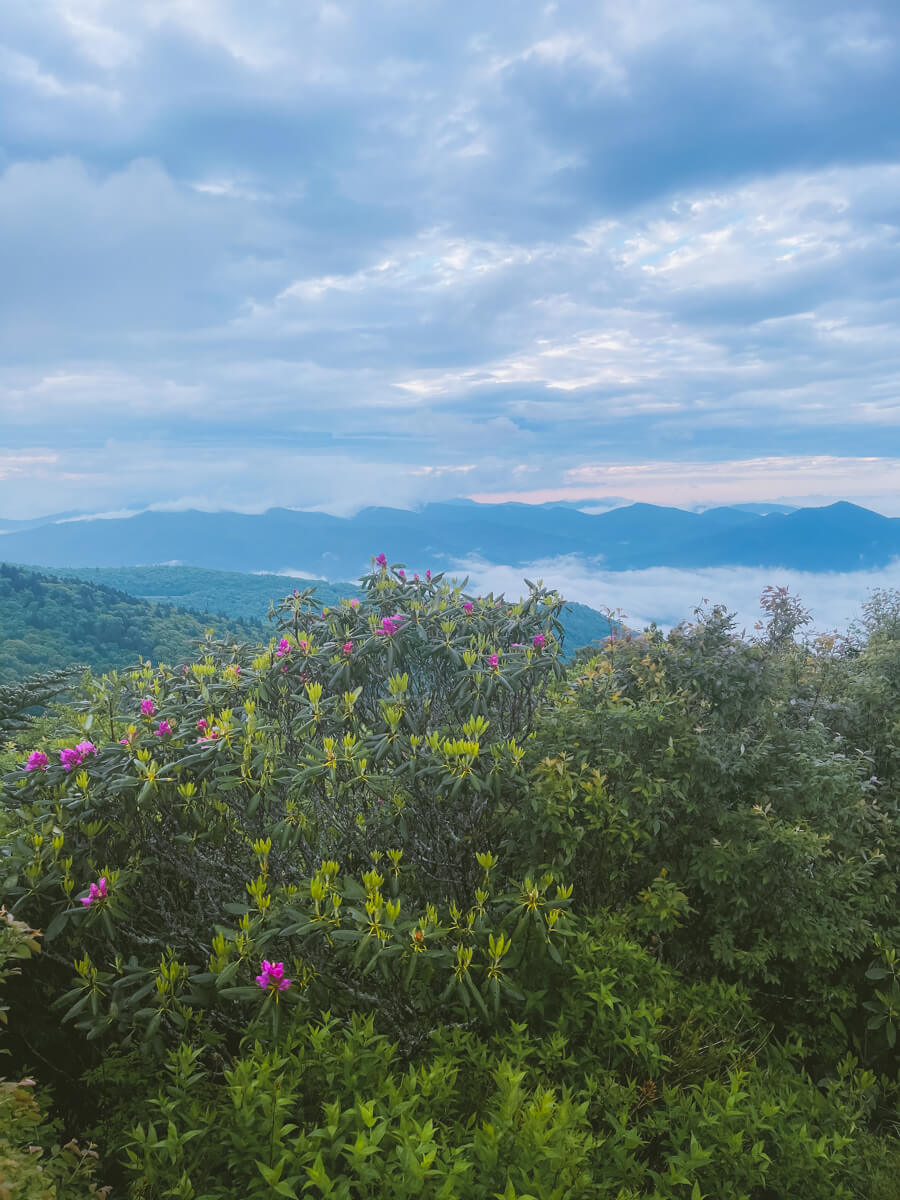
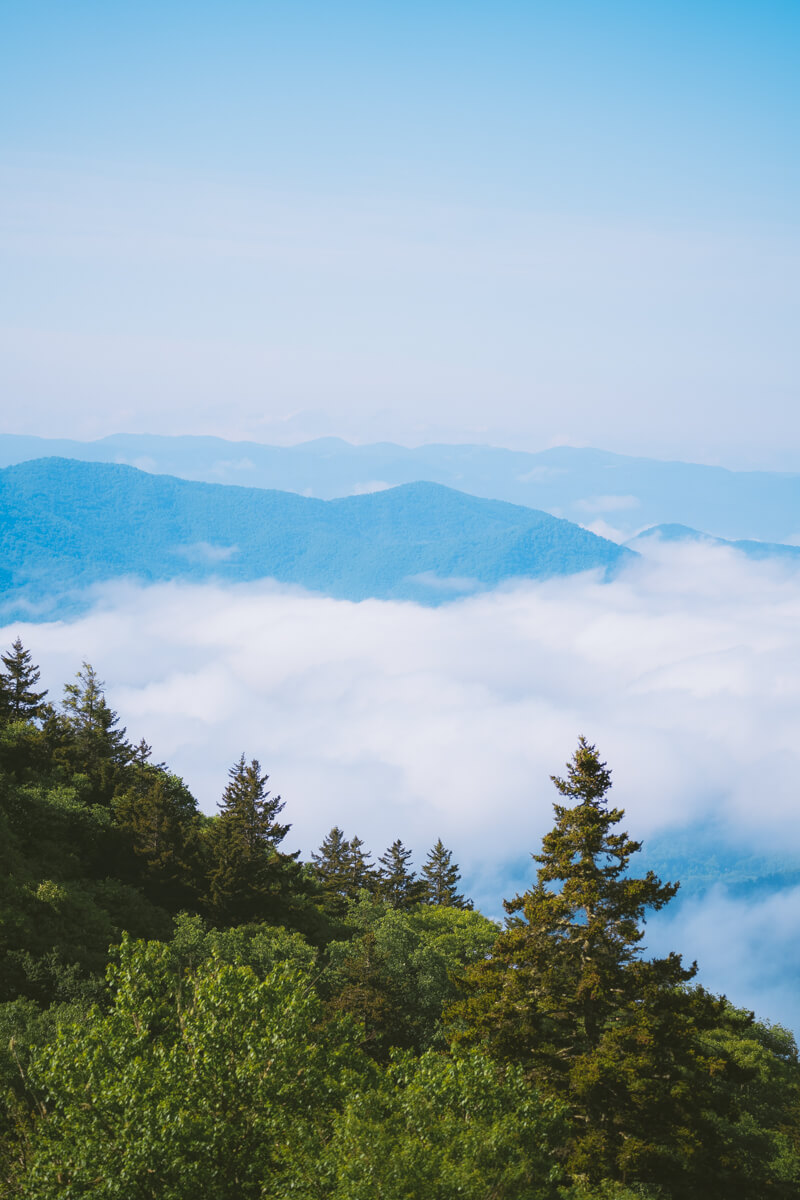
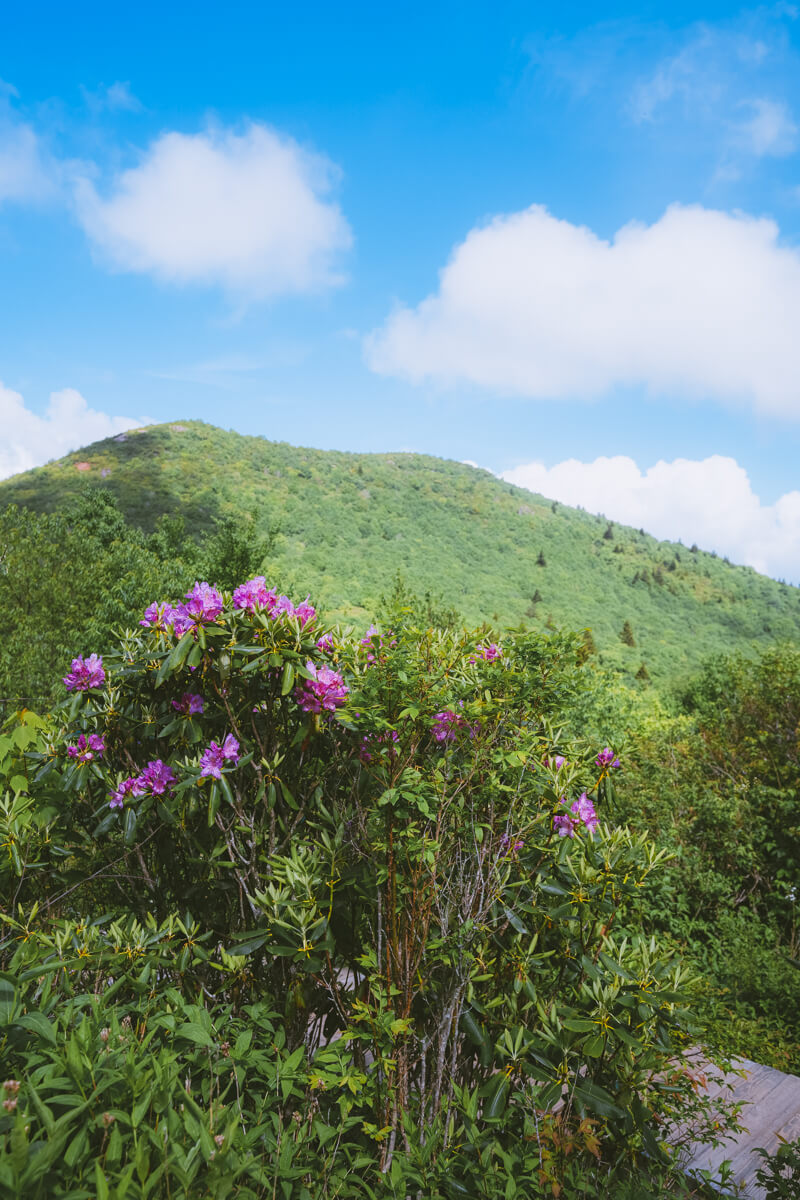
AllTrails
AllTrails is one of my favorite resources for finding hikes. I highly recommend signing up for an account so that you can keep track of hikes you want to do as well as hikes you’ve already done! Make sure to download the free app on your phone. Both the online version and the mobile app are very user-friendly.
What I love about AllTrails is that you can enter a location and apply filters to narrow down the suggestions. The app will also suggest “scenic hikes near me/hiking around me,” which is a neat feature.
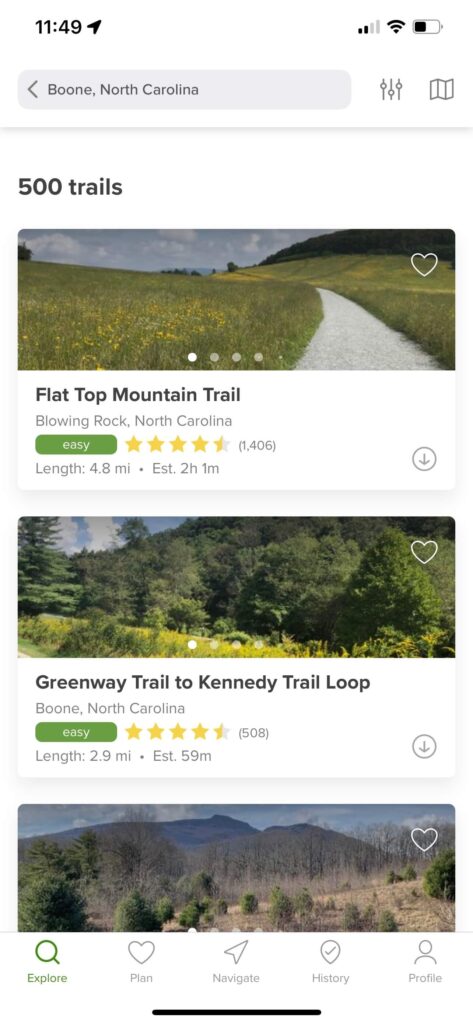
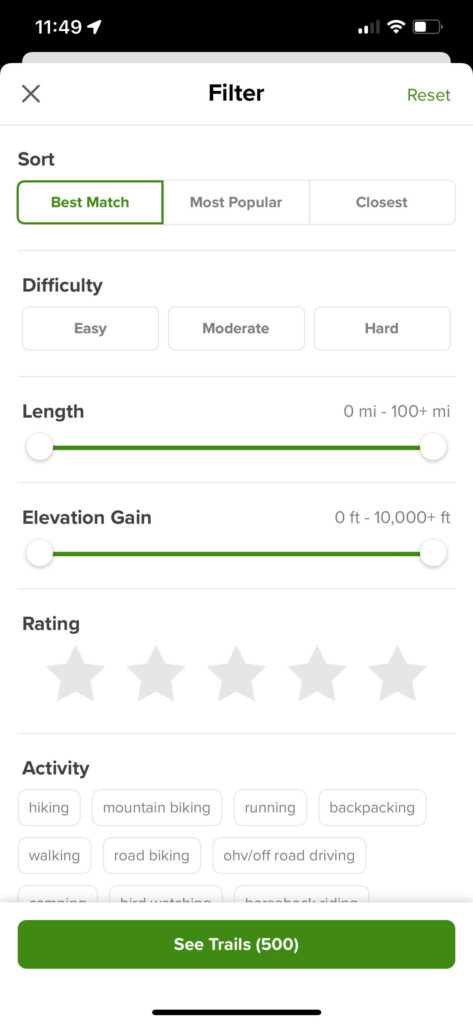
The fact that you can read reviews left by people who’ve done the hike is so helpful! Think of it like Google reviews for hiking trails. Make sure to skim through the reviews. Reviews can let you know if the trail is well-marked, difficult to find, a little bit tougher than the assigned difficulty rating, and an array of other things!
I find it helpful to sort the reviews by most recent to get the most up-to-date information. You’ll also be able to see photos others have uploaded so that you can get a better idea of what to expect.

P.S. – AllTrails offers a Pro membership for $29.99/yr. This isn’t necessary to create an account or use the website/app. However, it gives you access to certain features that you don’t get with a free membership. Click here to learn more about the AllTrails Pro membership. I have it because I think being able to download trail maps for offline navigation is invaluable!
Facebook Groups
I started joining hiking-related Facebook groups not too long ago and it has been a total game-changer. Definitely something I recommend for hiking for beginners on a budget! There are several groups I routinely check for inspiration since I’m based in North Carolina:
These groups are incredible resources not only for discovering new places but also for asking questions. And, they’re a great way to get the most up-to-date information on trail conditions.
It’s worth noting that you’re probably just going to get photos along with the trail name from posts within these groups, so it’s important to check another source such as AllTrails to determine the exact location, mileage, etc.
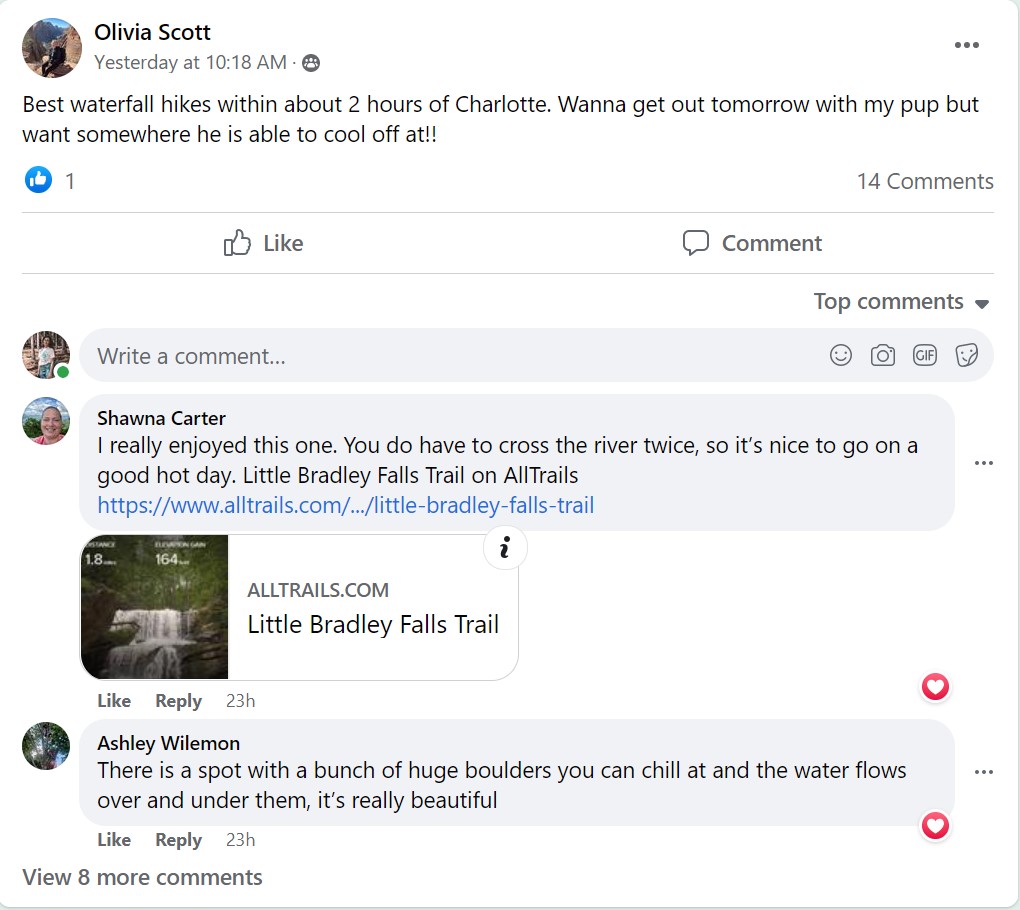
Pro tip: If you’re going on vacation and plan to hike, consider joining a Facebook group for that area! For example, I have plans to travel to Alaska later this year, so I joined the Hiking in Alaska Facebook group. I’ve saved tons of epic spots I might not have come across otherwise.
Hiking Do’s and Don’ts
I hope you feel prepared for future hikes and assured that hiking for beginners on a budget is totally doable! I want to leave you with a few do’s and don’ts to remember whenever you hit the trails.
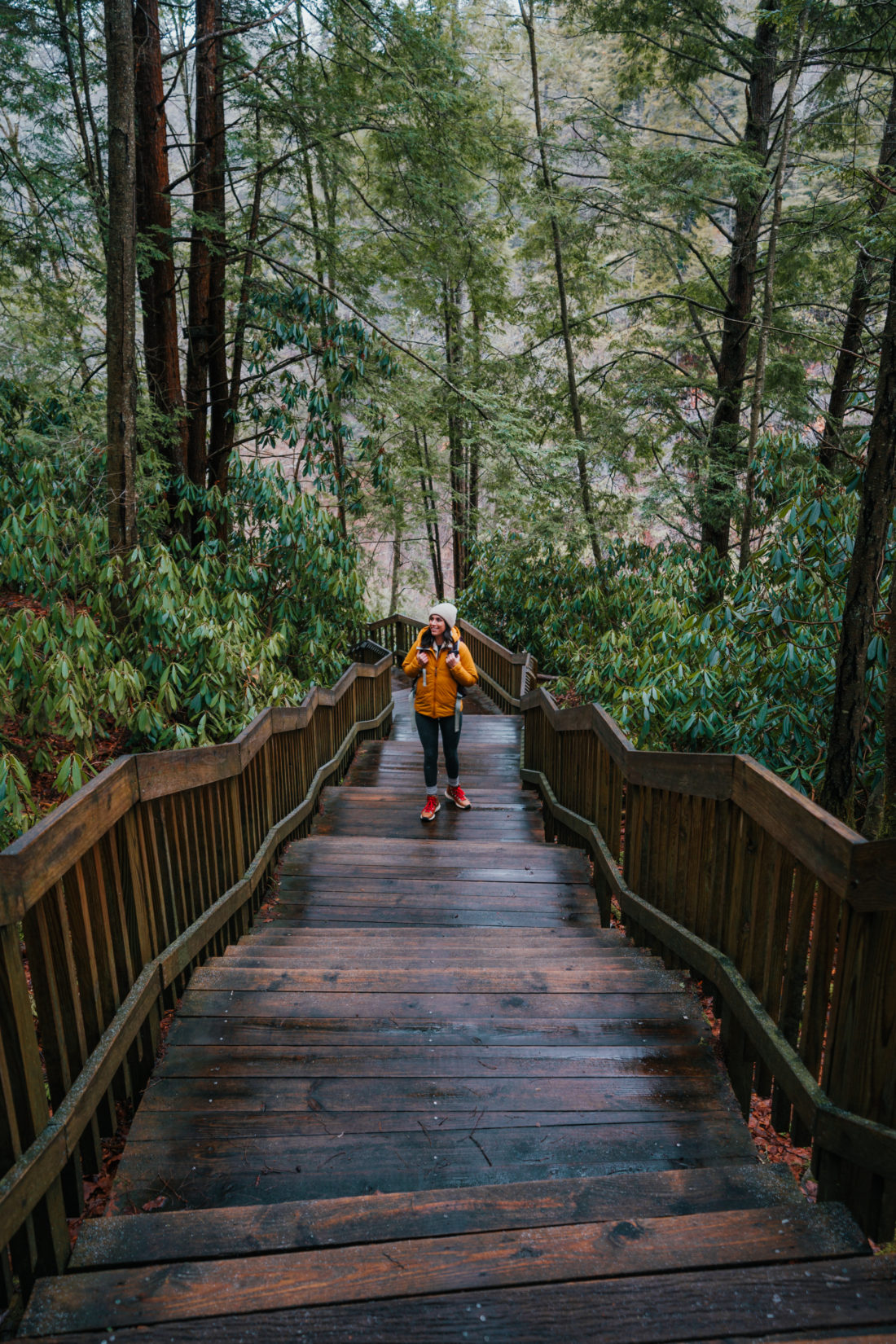
DOs
- Leave No Trace
- Be mindful of hiking etiquette
- Triple-check the weather
- Pack layers
- Download offline maps
- Inform someone of your plans
- Stay hydrated
- Leave it better than you found it by picking up any trash you might see and can pack out
- Turn around if you feel uncomfortable at any point whether it’s due to difficulty, weather, etc.
DON’Ts
- Overpack your pack
- Blast music loud enough for other hikers can hear it
- Disturb wildlife
- Pick flowers or plants
- Veer off the designated trail
- Leave anything behind or litter (pack out what you pack in)
Do you have any tips when it comes to hiking for beginners on a budget? If so, I’d love to hear them in the comments. Even as a seasoned hiker, I’m sure there are things I haven’t considered!
